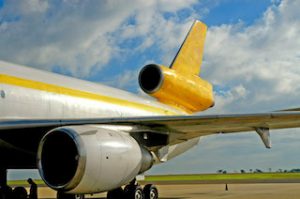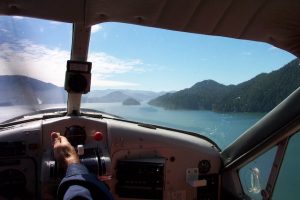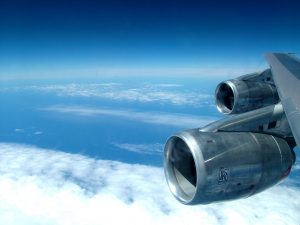Understanding Aerodynamics Of Jet Aircraft
 The Jet Orientation Course (JOC) is a pivotal step in the transition from flying propeller-driven aircraft to managing the complexities of jet aircraft. One of the essential components of the JOC is the study of aerodynamics specific to jet aircraft. This article provides an in-depth look at the aerodynamic principles taught in these courses, focusing on high-speed aerodynamics, jet handling characteristics, and stall and spin recovery. These topics are crucial for pilots to understand in order to safely and efficiently operate jet aircraft.
The Jet Orientation Course (JOC) is a pivotal step in the transition from flying propeller-driven aircraft to managing the complexities of jet aircraft. One of the essential components of the JOC is the study of aerodynamics specific to jet aircraft. This article provides an in-depth look at the aerodynamic principles taught in these courses, focusing on high-speed aerodynamics, jet handling characteristics, and stall and spin recovery. These topics are crucial for pilots to understand in order to safely and efficiently operate jet aircraft.
High-speed aerodynamics
High-speed aerodynamics is a fundamental area of study for pilots transitioning to jet aircraft. Jet planes typically operate at speeds much higher than those of propeller-driven aircraft, bringing unique aerodynamic challenges.
Effects of Mach Number
The Mach number, defined as the ratio of an aircraft’s speed to the speed of sound, plays a critical role in high-speed flight. Pilots must understand the significance of various Mach number ranges:
-
- Subsonic (Mach < 1): Most commercial jets operate in this range during cruise. Aerodynamic principles are similar to those of slower aircraft but with increased compressibility effects.
- Transonic (Mach 0.8 to 1.2): In this range, parts of the airflow around the aircraft become supersonic while others remain subsonic. This can lead to shock waves, which cause drag divergence and buffet, affecting aircraft stability and control.
- Supersonic (Mach > 1): While commercial jets typically do not operate in this range, military jets and some experimental aircraft do. Supersonic flight introduces challenges such as shock waves and wave drag.
Compressibility effects
At high speeds, the compressibility of air becomes a significant factor. Key concepts include:
-
- Shock waves: As the aircraft approaches the speed of sound, shock waves form, causing a sudden increase in pressure and temperature. These can lead to increased drag and potential control issues.
- Drag divergence: The point at which drag rapidly increases due to shock wave formation is known as the drag divergence Mach number. Pilots must understand how to manage speed to avoid excessive drag and maintain efficiency.
- Critical Mach number: This is the speed at which some parts of the airflow become supersonic. Pilots are trained to recognise and manage flight characteristics as the aircraft approaches this threshold.
Wave drag
Wave drag is a type of aerodynamic drag that occurs in the transonic and supersonic speed ranges. It results from shock waves generated by the aircraft and can significantly impact fuel efficiency and performance. Pilots learn techniques to minimise wave drag, such as optimising flight paths and speed.
Controlling high-speed flight
Maintaining control at high speeds requires understanding aerodynamic stability and control surfaces:
-
- Control surface effectiveness: At high speeds, the effectiveness of control surfaces like ailerons, elevators, and rudders can change. Pilots are trained to anticipate and compensate for these changes.
- Mach tuck: A phenomenon where the nose of the aircraft tends to pitch down as it approaches the speed of sound. Pilots must know how to counteract Mach tuck to maintain control.
Jet handling characteristics
The handling characteristics of jet aircraft differ significantly from those of propeller-driven planes. Understanding these differences is crucial for safe and efficient jet operations.
Speed and thrust management
Jet engines have different thrust characteristics compared to piston engines. Key points include:
-
- Thrust delay: Jet engines take longer to spool up compared to piston engines. Pilots must anticipate power changes and manage thrust carefully, especially during critical phases of flight like takeoff and landing.
- Speed stability: Jet aircraft often have higher speed stability, meaning they can maintain a set speed more easily. However, this also means pilots must be vigilant about monitoring speed to avoid overspeed conditions.
Weight and balance
Jet aircraft typically have higher weights and different balance characteristics:
-
- Center of gravity (CG): Managing the aircraft’s CG is crucial for stability and control. Pilots are trained to monitor weight distribution and ensure the CG remains within acceptable limits.
- Inertia: Due to their higher mass, jet aircraft have greater inertia. Pilots must plan and execute maneuvers with consideration for this increased inertia, particularly during turns and changes in flight path.
Control sensitivity
The control sensitivity of jet aircraft can vary:
-
- Hydraulically powered controls: Many jets use hydraulically powered flight controls, which can be more sensitive than mechanical controls. Pilots learn to handle these controls with precision.
- Fly-by-wire systems: Modern jets often use fly-by-wire systems, where electronic signals control flight surfaces. These systems can provide enhanced stability and control but require a different handling approach.
Performance characteristics
Jets have performance characteristics that differ from propeller aircraft:
-
- Climb and descent rates: Jet aircraft can achieve higher climb and descent rates. Pilots must manage these rates carefully to ensure passenger comfort and meet air traffic control requirements.
- Cruise efficiency: Jets are designed for efficient cruise performance at high altitudes. Pilots are trained to optimize cruise settings for fuel efficiency and range.
Stall and spin recovery
Stall and spin recovery are critical skills for pilots, and jet aircraft present unique challenges in these areas.
Understanding stalls
A stall occurs when the aircraft’s wing exceeds its critical angle of attack, causing a loss of lift. Key points include:
-
- High-speed stalls: Jet aircraft can experience high-speed stalls, where the onset is more abrupt and recovery requires careful management of speed and attitude.
- Low-speed stalls: Despite their high-speed capabilities, jets can also stall at low speeds, particularly during takeoff and landing. Pilots must be adept at recognising and preventing low-speed stalls.
Recognising stall signs
Pilots are trained to recognise early signs of an impending stall:
-
- Buffeting: Aerodynamic buffeting is a common precursor to a stall, caused by turbulent airflow over the wings.
- Stick shaker: Many jets are equipped with a stick shaker, which vibrates the control column to warn of an approaching stall.
- Angle of attack indicators: Modern jets may have angle of attack indicators that provide real-time feedback on the wing’s angle of attack.
Stall recovery techniques
Effective stall recovery techniques are critical for maintaining control:
-
- Reducing angle of attack: The primary method of stall recovery is to reduce the angle of attack by pushing the control column forward.
- Increasing thrust: Adding thrust helps to regain airspeed and lift.
- Levelling the wings: Ensuring the wings are level prevents a spin from developing.
Spin dynamics and recovery
While jets are generally less prone to spins due to their design, understanding spin dynamics is still important:
-
- Spin characteristics: Spins in jets can be more difficult to recover from due to higher speeds and inertia.
- Recovery procedures: Pilots are trained in standardised spin recovery procedures, which typically involve reducing power, levelling the wings, and gradually pulling out of the dive.
Integrating aerodynamics into practical training
The theoretical knowledge of high-speed aerodynamics, jet handling characteristics, and stall and spin recovery is integrated into practical training scenarios in the Jet Orientation Course.
Simulated training
Flight simulators play a crucial role in teaching aerodynamic principles:
-
- High-speed scenarios: Simulators allow pilots to experience high-speed aerodynamic effects in a controlled environment, practicing responses to conditions like Mach tuck and shock wave formation.
- Handling manoeuvres: Pilots practice various handling manoeuvres, including steep turns, climbs, and descents, to develop a feel for jet aircraft performance.
- Stall and spin recovery: Simulated stalls and spins provide a safe environment to practice recovery techniques.
Real-world application
The principles learned in the classroom and simulators are applied during actual flight training:
-
- High-altitude operations: Pilots practice high-altitude cruise and descent, managing speed and thrust for optimal performance.
- Takeoff and landing: Training includes numerous takeoff and landing scenarios to master the handling characteristics of jets during these critical phases of flight.
- Emergency procedures: Real-world emergency procedures, including engine failures and system malfunctions, are practiced to ensure pilots can apply aerodynamic knowledge under pressure.
Conclusion
Understanding the aerodynamics of jet aircraft is a cornerstone of the Jet Orientation course for pilots. The course covers essential topics such as high-speed aerodynamics, jet handling characteristics, and stall and spin recovery. By mastering these areas, pilots are well-prepared to transition from propeller-driven aircraft to the more complex and demanding world of jet operations. The knowledge and skills gained in the JOC not only enhance safety and proficiency but also equip pilots to handle the advanced aerodynamic challenges of modern jet aircraft. As aviation technology continues to evolve, the importance of comprehensive aerodynamic training will remain a key component of pilot education and development.










